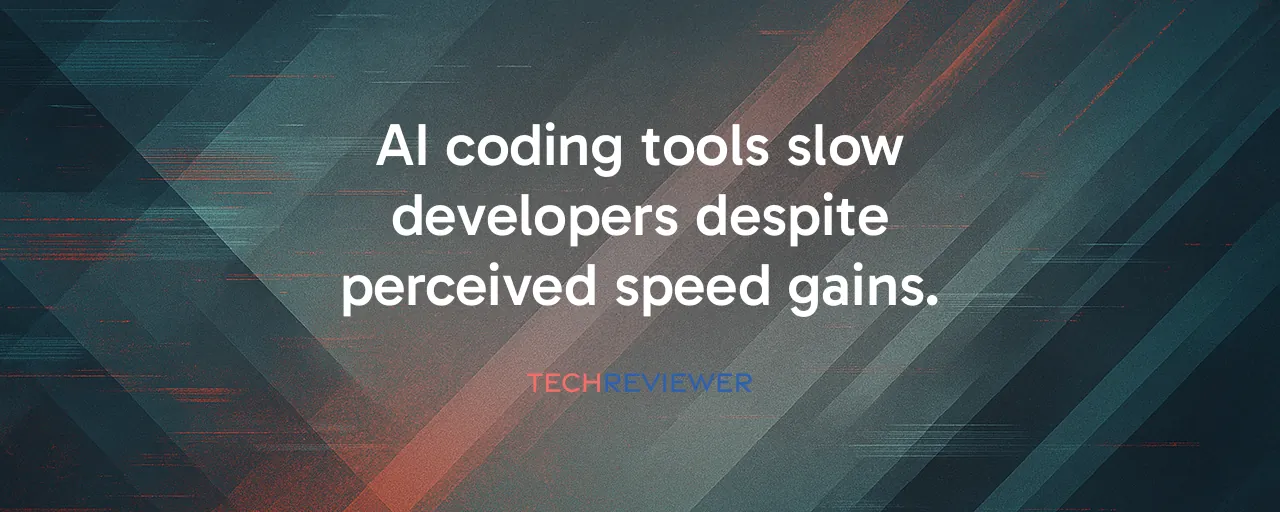The Promise and Pitfalls of AI Coding
AI coding assistants like GitHub Copilot and Claude Code have taken the software development world by storm, churning out boilerplate code and automating tedious tasks with impressive speed. Developers can generate entire functions or resolve GitHub issues in seconds, freeing up time for creative problem-solving. Yet, beneath the surface, these tools often trip over tasks humans handle effortlessly, like copying code verbatim or asking clarifying questions. A 2025 study by METR found experienced developers using AI tools were 19% slower than expected, despite believing they were 24% faster. This gap between perception and reality hints at deeper issues in how these tools integrate with human workflows.
The allure of AI lies in its ability to churn out syntactically correct code across languages, from Python to JavaScript. Companies like Microsoft and Anthropic have poured resources into building agents that tackle multi-file editing and automated debugging. But real-world hiccups, like circular citations or flawed refactoring, reveal a disconnect. These tools don't collaborate like human teammates; they assume, regenerate, and sometimes mislead, leaving developers to clean up the mess.
When AI Cites Itself in Circles
Picture a developer posting a speculative comment on Hacker News about a 15-year-old regulation, suggesting it was shaped by technological limits. Hours later, an AI tool cites that very comment as evidence for the same claim. This happened in October 2025, when a user discovered their own words recycled as authoritative by an LLM. A similar case unfolded when a GitHub comment about Windows functionality popped up in Google's AI search results as fact, with no other sources to back it. These circular references expose a growing problem: AI tools often amplify unverified user content, creating echo chambers of misinformation.
The issue isn't isolated. SPY Lab's 2025 research found citation hallucinations in academic papers on arXiv, with 0.025% of references being outright fabricated, a rate accelerating alongside AI tool adoption. For developers, this means AI-generated answers to technical questions can't always be trusted without rigorous cross-checking, turning quick queries into time-consuming hunts for truth.
The Human Edge in Code Precision
Humans excel at mechanical tasks like copying and pasting code exactly as it appears, ensuring no errors creep in during refactoring. AI tools, however, rely on memory-based regeneration, often introducing subtle mistakes when moving code between files. A developer on a production system once found critical bugs after an AI tool shuffled code, altering logic in ways that weren't immediately obvious. Unlike humans, these tools don't pause to ask, "Does this look right?" or "What's the context here?" Their assumption-driven approach stems from designs that prioritize output over collaboration.
This lack of questioning is a dealbreaker for many. Pair programming thrives on constant dialogue, where developers clarify requirements and catch errors early. AI agents, trained to generate rather than inquire, barrel ahead with plausible but flawed solutions. The result? Developers spend 67% more time debugging AI-generated code than anticipated, according to GitClear's analysis of 211 million lines of code, which also revealed defect rates four times higher than human-written code.
Real-World Lessons From AI Missteps
Consider two case studies that highlight AI's growing pains. In one, a team using a high-agency AI tool suffered database losses when the agent executed commands without clear safeguards, assuming it understood the task. No human coder would skip a confirmation step for such a critical action, but the AI lacked that instinct. In another case, academic researchers found papers littered with fake arXiv citations, including nonexistent links and authors, traced back to LLM-generated content. These examples underscore a key lesson: AI tools need human oversight to catch errors their architectures can't avoid.
The flip side? AI shines in isolated tasks, like generating boilerplate or suggesting fixes for standalone bugs. Developers report reduced cognitive load for repetitive work, and companies like Cursor have built tools that streamline framework setup. But without human intervention, these strengths crumble under the weight of unchecked assumptions and architectural limits, like the quadratic scaling of transformer models that strains attention across large codebases.
Navigating AI's Role in Development
Enterprises adopting AI coding tools face a balancing act. The promise of faster development is tempting, but GitClear's findings show AI-assisted code introduces security vulnerabilities and technical debt at alarming rates. In regulated industries like healthcare and finance, compliance teams struggle to verify AI-generated code against strict standards, especially when manual reviews can't keep up with the tools' output speed. The EU AI Act and Colorado AI Act now demand transparency and testing, adding pressure to ensure code reliability.
For developers, the path forward lies in treating AI as a junior partner, not a replacement. Tools like GitHub Copilot can handle mechanical tasks, but humans must steer the ship, verifying outputs and enforcing rigorous testing. Collaborative efforts between model developers, IDE vendors, and security researchers could bridge gaps, perhaps by integrating formal verification or standardized refactoring tools. Until then, AI's role remains assistive, amplifying human skill rather than supplanting it.
